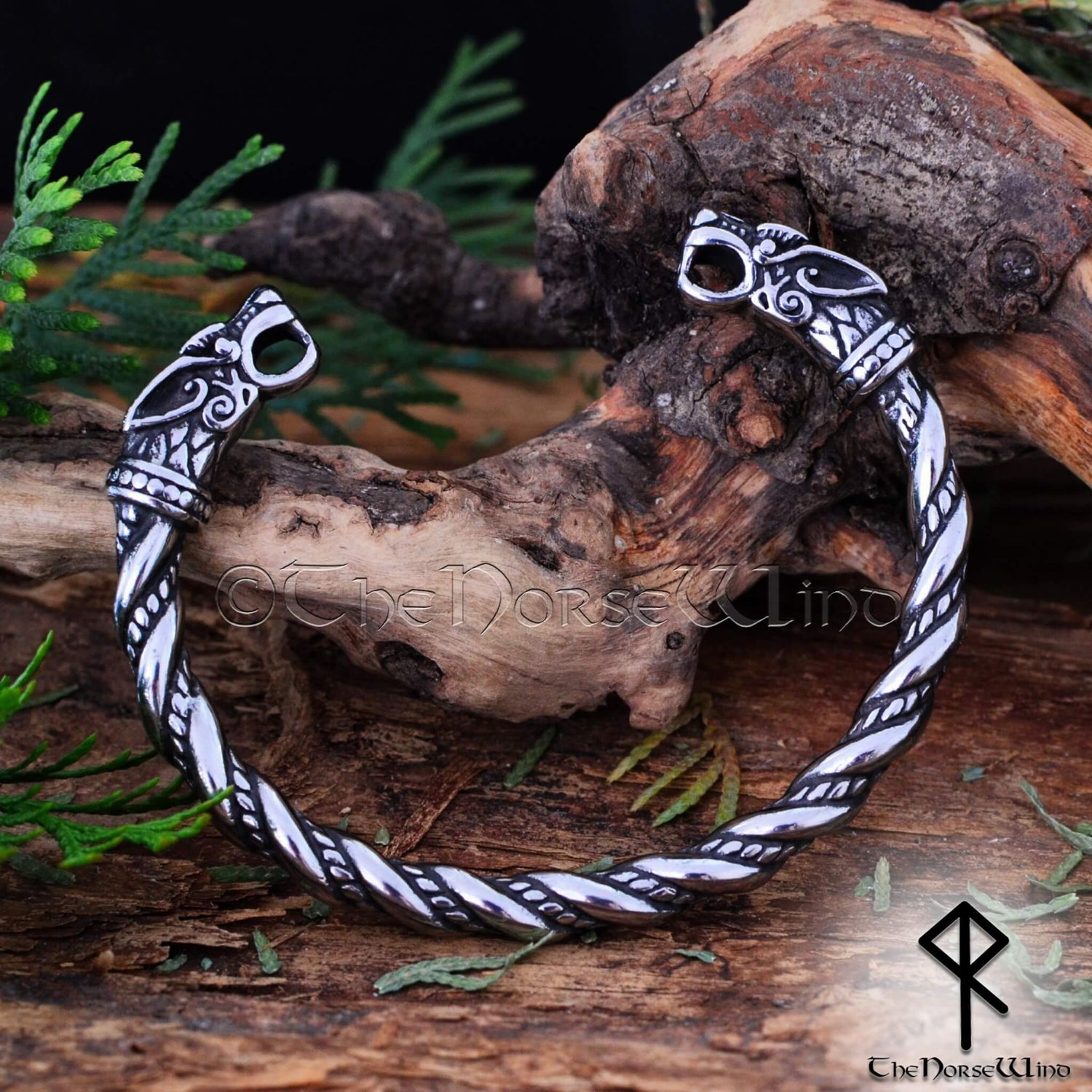Die legendären Wikingerschiffe: Säulen der Entdeckungsreise und Macht der Wikinger
Share
Keine Erkundung der nordischen Geschichte ist vollständig, ohne einen tiefen Einblick in die außergewöhnlichen Wikingerschiffe zu haben. Die Wikinger, die wagemutigen Seefahrer aus Skandinavien, erweiterten ihren Einflussbereich vom 8. bis zum 11. Jahrhundert über ganz Europa, was vor allem ihrer Schiffsbaukunst zu verdanken war. Wikingerschiffe waren mehr als nur Schiffe – sie waren das Lebensblut der Wikingergesellschaft und ermöglichten Handel, Erkundung und Eroberung im großen Stil. Schauen wir uns die verschiedenen Typen von Wikingerschiffen, ihre Konstruktionsmerkmale und die faszinierenden Navigationsmethoden an, die ihre Reisen ermöglichten.

Die Entwicklung des Wikingerschiffdesigns
Eines der frühesten entdeckten Wikingerschiffe war das Oseberg-Schiff, das im norwegischen Oslofjord ausgegraben wurde und einen Einblick in die Vielseitigkeit früher Wikingerschiffe bietet. Dieses und andere frühe Funde wie das Gokstad-Schiff wurden für verschiedene Zwecke verwendet, von der Reise bis zum Kampf, und zeigten die Anpassungsfähigkeit der Wikinger. Im Laufe der Wikingerzeit wurden die Schiffsdesigns jedoch spezialisierter.
Im 9. Jahrhundert begannen die Wikingerschiffbauer, Schiffe speziell für den Krieg zu bauen. Diese Schiffe waren lang und schmal, anders als die früheren Mehrzweckschiffe. Das schlanke Design ermöglichte es den Kriegsschiffen, in seichten Gewässern zu navigieren, was es den Wikingern erleichterte, Küstensiedlungen schnell zu überfallen. Wikingerkrieger konnten sich einem Ziel heimlich nähern, mit minimaler Verzögerung von Bord gehen und ebenso schnell mit ihren neu erworbenen Gütern aufbrechen, und das alles, ohne dass große Seeschlachten nötig waren.
Das ikonische Langschiff und Frachtschiff
Im 10. Jahrhundert erreichte der Schiffsbau der Wikinger neue Höhen. Kriegsschiffe entwickelten sich weiter zu dem, was wir heute „Langschiffe“ nennen, ein Begriff, der einige verschiedene Typen von Wikinger-Kriegsschiffen umfasst. Diese langen, schnittigen Schiffe konnten beeindruckende Geschwindigkeiten erreichen, ideal für schnelle Raubzüge und Reisen. Die Wikinger unterteilten ihre Langschiffe weiter; zum Beispiel waren die besonders schmalen und länglichen Schiffe als „Skeiðar“ bekannt, während diejenigen, die mit Drachen- oder Schlangenköpfen verziert waren, „Drakkar“ hießen. Kleinere, wendige Langschiffe waren als „Snekke“ bekannt.

Neben dem Langschiff entstand ein weiterer wichtiger Schiffstyp: das Frachtschiff. Dieses für seine große Ladekapazität bekannte Schiff war runder und stützte sich hauptsächlich auf Segel statt Ruder, sodass es mit nur einer kleinen Besatzung leicht zu bedienen war. Die Frachtschiffe der Wikinger waren für den Transport von Gütern, Tieren und Menschen über weite Entfernungen unverzichtbar. Sie konnten erhebliche Lasten tragen und spielten eine wichtige Rolle in den Handelsnetzwerken der Wikinger, die Skandinavien mit Regionen in ganz Europa, Asien und darüber hinaus verbanden.
Wikinger-Navigation: Schiffe ohne Kompass führen
Einer der erstaunlichsten Aspekte der Seefahrt der Wikinger war ihre Fähigkeit, große Entfernungen ohne die modernen Navigationsinstrumente zurückzulegen, die wir für selbstverständlich halten. Die Wikinger verließen sich auf ein tiefes Verständnis der Naturelemente. Indem sie tagsüber die Position der Sonne beobachteten und nachts die Sterne studierten, konnten sie einen gleichmäßigen Kurs über das Meer halten. Darüber hinaus beobachteten sie Windmuster, Wolkenformationen und sogar das Verhalten von Seevögeln und Meerestieren, um ihren Weg zu finden.
Einige Historiker glauben, dass die Wikinger ein raffiniertes Werkzeug namens „Sonnenstein“ verwendeten, einen Kristall, der Licht polarisieren sollte, um die Position der Sonne an bewölkten Tagen zu bestimmen. Obwohl die Theorie umstritten ist, unterstreicht die Möglichkeit, dass Sonnensteine verwendet wurden, den Einfallsreichtum der Wikinger bei der Entwicklung von Möglichkeiten, den Himmel und die Meere effektiv zu lesen.
Erbe und historische Bedeutung der Wikingerschiffe
Diese bemerkenswerten Schiffe spielten eine entscheidende Rolle bei der Etablierung der Vorherrschaft der Wikinger in Nordeuropa und darüber hinaus. Wikingerschiffe waren für ihren Rauberfolg von entscheidender Bedeutung und für den Aufbau kontinentaler Handelsnetzwerke unverzichtbar. Norwegen ist nach wie vor ein wichtiger Ort, um die Geschichte der Wikingerschiffe zu erkunden. Das Wikingerschiffsmuseum in Oslo bietet Besuchern die Möglichkeit, einige dieser außergewöhnlichen Schiffe aus erster Hand zu sehen.
Jedes Wikingerschiff erzählt die Geschichte einer Kultur, die auf Entdeckungsreise, Stärke und Überleben basierte. Heute können wir die Handwerkskunst und Innovationskraft würdigen, die diese Seefahrer zu solch beeindruckenden Reisenden und Händlern machten. Indem wir uns mit Wikingerschiffen beschäftigen, erhalten wir Einblick in eine Zeit, in der mutige Entdeckungsreisen auf unübertroffene Schiffbaukompetenz trafen und den Wikingern halfen, ihren legendären Platz in der Geschichte zu erobern.











